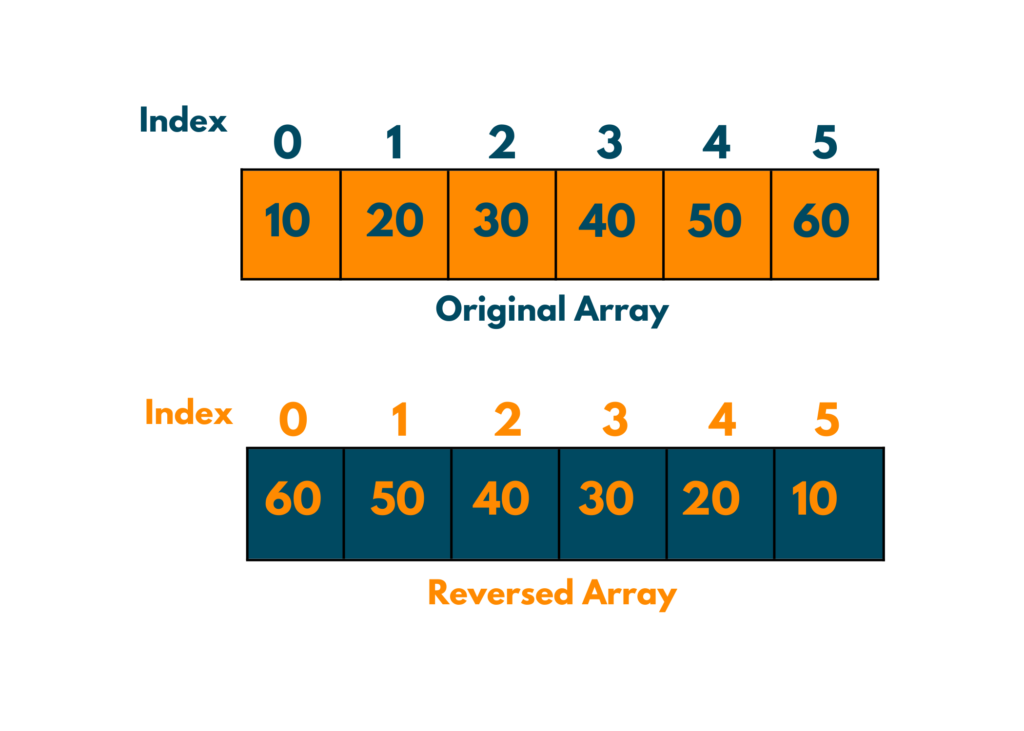Reversing arrays is a common operation in Python programming that allows you to manipulate data structures effectively. Whether you’re working on algorithms, solving interview problems, or managing datasets, reversing arrays plays a crucial role in programming. Python provides multiple ways to reverse arrays, offering flexibility to developers when reversing arrays in Python.

Why Reverse an Array?
Reversing arrays has several practical applications, such as:
- Algorithm Optimization: Certain algorithms rely on reversing arrays to process data in specific orders.
- Data Processing: Useful when analysing datasets in reverse order.
- Problem Solving: Common in coding challenges and interview questions regarding array manipulation in Python.
Methods to Reverse Arrays in Python
1. Using the reverse() Method
Python’s built-in reverse() method is a simple and efficient way to reverse an array in place.
array = [1, 2, 3, 4, 5] array.reverse() print(array) # Output: [5, 4, 3, 2, 1]
Key Features:
- Modifies the original array.
- Does not return a new array, making it reliable for Python reverse arrays tasks.
2. Using Slicing
Array slicing provides a concise way to reverse an array without altering the original array.
array = [1, 2, 3, 4, 5] reversed_array = array[::-1] print(reversed_array) # Output: [5, 4, 3, 2, 1]
Key Features:
- Creates a new reversed array.
- Ideal for preserving the original data structure while achieving a Python reversed array.
3. Using the reversed() Function
The reversed() function returns an iterator that allows you to traverse the array in reverse order.
array = [1, 2, 3, 4, 5] reversed_iterator = reversed(array) reversed_array = list(reversed_iterator) print(reversed_array) # Output: [5, 4, 3, 2, 1]
Key Features:
- Returns a reversed iterator.
- Suitable for creating a reversed copy of the array using Python programming techniques.
4. Using a Loop
You can use a for loop to reverse an array manually by iterating through it in reverse order.
array = [1, 2, 3, 4, 5]
reversed_array = []
for i in range(len(array) - 1, -1, -1):
reversed_array.append(array[i])
print(reversed_array) # Output: [5, 4, 3, 2, 1]Key Features:
- Provides more control over the reversal process.
- Useful for educational purposes to understand the logic behind Python reverse arrays.
Key Considerations When Reversing Arrays
- In-place vs. New Array: Choose between modifying the original array or creating a new one based on your use case when reversing arrays in Python.
- Data Type: Ensure compatibility of the chosen reversal method with the data type of the array.
- Performance: For large datasets, methods like slicing and
reverse()are generally more efficient for reversing arrays in Python.
Best Practices
- Use
reverse()for in-place modifications to save memory. - Prefer slicing or
reversed()when the original array needs to be preserved while reversing arrays in Python. - Avoid manual loops for large arrays due to potential performance bottlenecks.
Conclusion
Reversing arrays in Python is an essential skill that can be achieved using various built-in methods and custom logic. Whether you use the reverse() method, slicing, or a loop, each approach serves specific scenarios, ensuring flexibility in handling data structures. By mastering array reversal techniques, you can enhance your coding efficiency and problem-solving abilities in Python programming, particularly with tasks involving Python reverse arrays.
Interview Questions
1. What are the different ways to reverse an array in Python? (Amazon)
In Python, you can reverse an array using several methods:
reverse()Method: Reverses the array in place, modifying the original array.- Slicing (
[::-1]): Creates a reversed copy of the array without altering the original. reversed()Function: Returns an iterator to traverse the array in reverse.- For Loop: Uses a manual approach by iterating the array in reverse order and appending elements to a new array.
2.What is the difference between using the reverse() method and slicing for reversing an array? (Google)
reverse() Method:
- Reverses the array in place.
- Does not create a new array.
- Ideal for scenarios where memory efficiency is critical.
Slicing ([::-1]):
- Returns a new array with reversed elements.
- Preserves the original array.
- Useful when you need to maintain the original data structure.
3.How does the reversed() function work in Python? (Microsoft)
The reversed() function in Python returns an iterator that allows you to traverse the array in reverse order. It does not modify the original array but can be converted into a list using the list() constructor. This is useful when you need a reversed copy of the array.
4.What is the time complexity of array reversal methods in Python? (Meta)
The time complexity for reversing an array using reverse(), slicing, or reversed() is O(n), where n is the length of the array. This is because each method needs to iterate through all elements of the array to reverse their order.
5.Can you reverse a multidimensional array in Python? (apple)
Yes, you can reverse a multidimensional array in Python using nested loops or advanced techniques like NumPy. For example:
- Use slicing to reverse rows or columns in a 2D array.
- Use the
reversed()function or manual iteration to reverse nested elements.
However, the exact approach depends on the structure and desired reversal logic.
Lets play : Reverse arrays
Question
Your answer:
Correct answer:
Your Answers
Learn about arrays and Arrays in Ds
